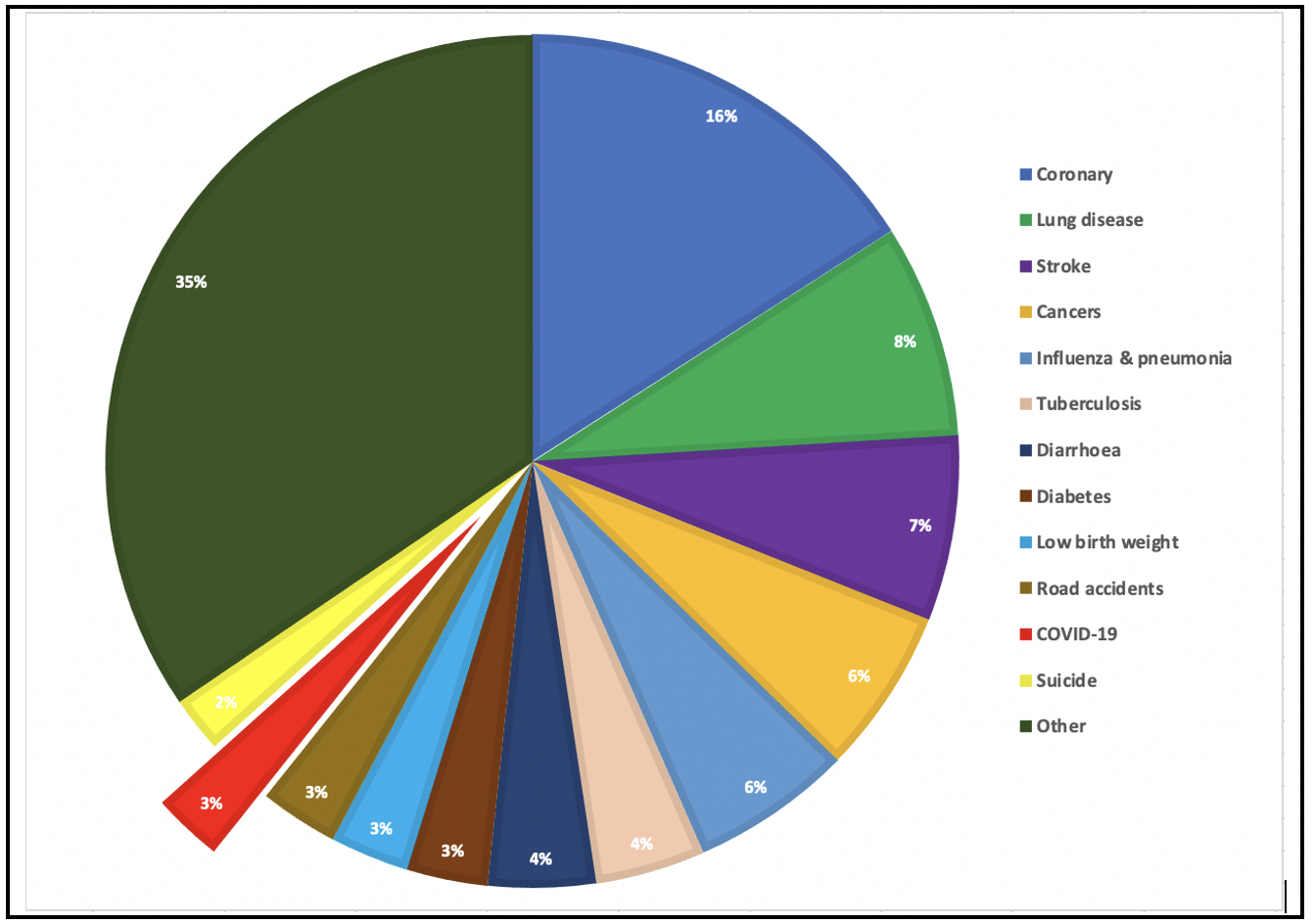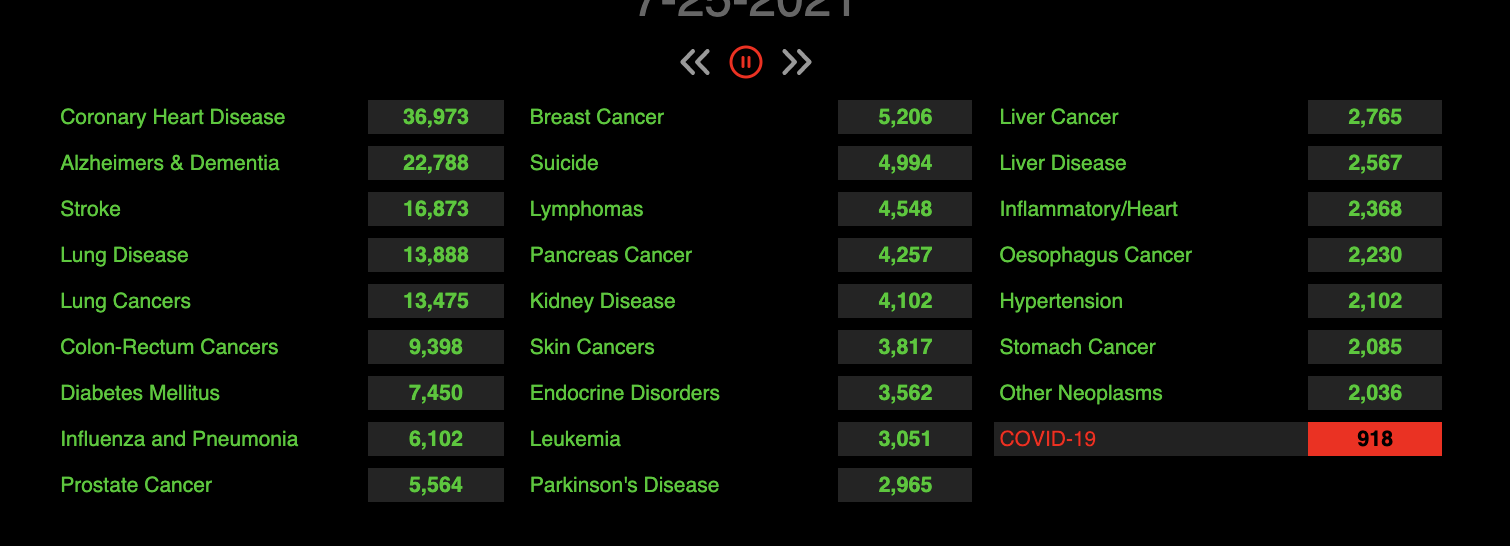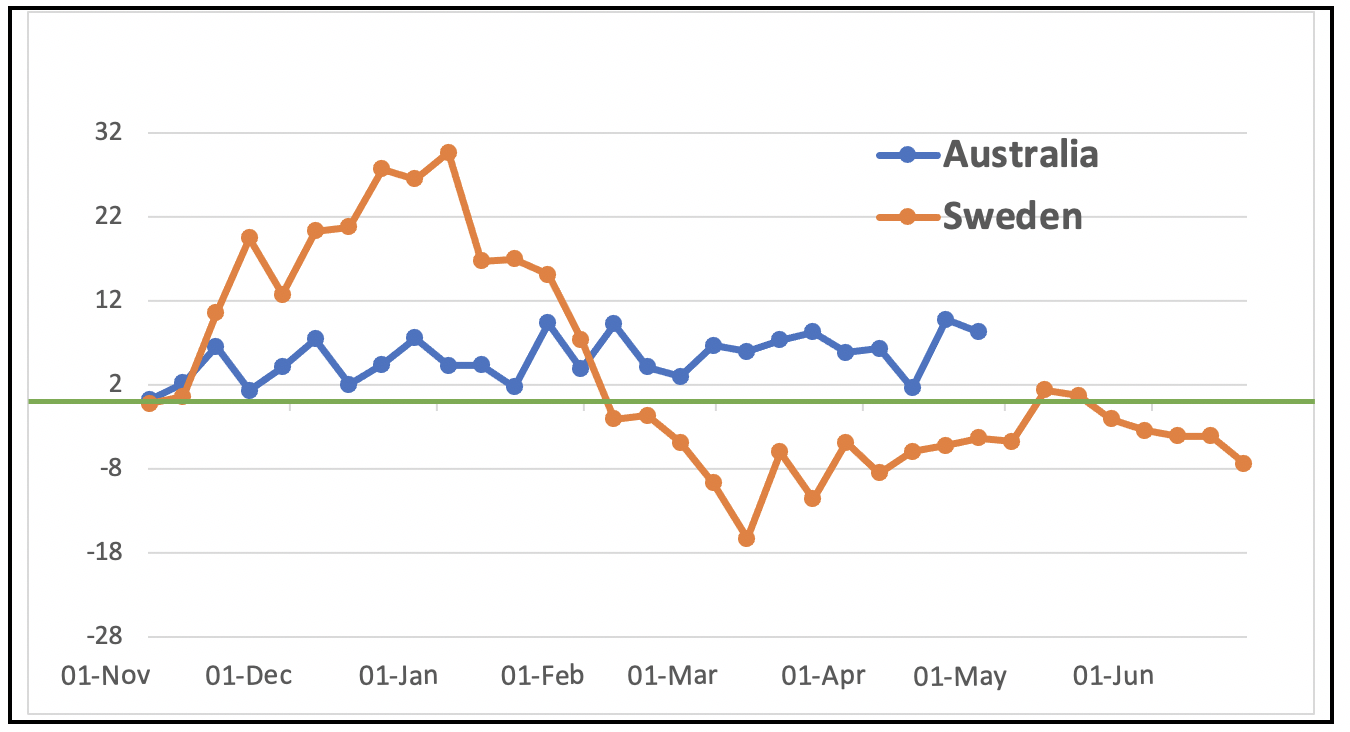The conclusion to a two-piece article.
About 10.1mn people are estimated to have died from all causes in India in 2020, and about 16mn in the pandemic period 1 March 2020 to 26 July 2021. The estimate of Covid deaths is 150,000 for 2020 and for the pandemic period it’s 421,000. On 20 July, the Washington-based Center for Global Development published a report which estimated India’s excess mortality to be 4.9mn over the 15 months of the pandemic. They conclude this proves India’s Covid mortality is higher by ‘several orders of magnitude’ than the official count. It’s a good example of how even a sophisticated approach to data and methods is no guarantee of accuracy of analysis and interpretation.
I dealt with the case of India on 10 April and there’s no need to repeat the facts and arguments. Instead take a look at Figure 6. There are ten other bigger causes of deaths in India. The CGD report makes much of Covid undercounting. However, to anyone who knows India, the unreliability of statistics is a function of extremely weak state capacity and this extends to data on all the killer diseases. Moreover, in Indian conditions state surveillance and record-keeping capacity would have been severely impaired by the impact of the pandemic and lockdowns. And so too would the state’s already very poor public health capacity have been badly degraded by the combination of Covid and restrictions.
Of course, in this India is emblematic of the developing world in general, where the deadly impact of lockdowns has been powerfully documented by Toby Green in his recent book The Covid Consensus: The New Politics of Global Inequality. We also await the publication of The Great Covid Panic by Michael Baker, Gigi Foster and Paul Frijters for another take on the lasting harms from lockdowns.

Figure 6: India’s leading causes of death, 1 March 2020–26 July 2021. Drawn from data at World Life Expectancy.

Figure 7: Australia’s leading causes of death, 1 March 2020 – 25 July. Drawn from data at World Life Expectancy.
The Australian response has not been science-driven, not unified, not sensible, and neither consistent nor coherent. Figure 7 gives the statistics on leading causes of deaths, with Covid coming in at 26th. In the calendar year 2021 to date, Covid deaths are just 15. But our politicians, health bureaucrats and media remain spooked by the deadly waves that have swept through other parts of the world. At least the self-congratulatory smugness at being the envy of the world has abated and there is dawning recognition that instead, we are becoming the laughing stock with our fixation on ‘cases’, even as others recognise the silliness of using this unreliable measure based on often wildly inaccurate test results.
What is yet to register on the public, media and political consciousness is the rising numbers of all-causes excess deaths. There is still radio silence in the mainstream media about Australia’ excess deaths. For reasons beyond comprehension, Covid deaths are to be avoided at all costs, including causing more deaths from other causes by measures implemented to minimise Covid deaths. The collateral harms to other health outcomes, mental health, the economy and liberties are simply brushed aside as not worthy of consideration.
Australia’s estimated deaths in 2020 were 169,000, or about a daily average of 463; and for the pandemic period 1 March 2020 to 26 July 2021, 267,000. The total number of Covid deaths in 2020 thus amounted to just two days of all-causes deaths. The total number of all deaths from 1 January to 30 April this year was 44,407 (ABS release on 29 July 2021). Within this, there were 2,427 (5.6%) excess deaths to 30 April – 7,382 annualised and more per day on average than the total Covid deaths this year so far.
The ABS says in the summary of key statistics: ‘Counts of deaths were above historical averages for each month of 2021’. In fact, the tables of weekly deaths show that the count has been above average for every single week since 1 November 2020 (Figure 8). Cancer deaths were up by 780 (5.1%), diabetes by 113 (8.4%) and dementia by 742 (18.5%). All three are among the list one would include in the likely areas of damage from the neglect of regular health services, screenings and treatments.
By contrast, Sweden’s excess deaths have been below the five-yearly average for every week since 7 February, except for a fortnight in May. The country of course is legendary for rejecting lockdown advice and pressure.

Figure 8: Excess deaths from all causes, Nov 2020–June 2021, Australia and Sweden. Based on data from the Australian Bureau of Statistics, Our World in Data.
Is it any wonder that people are starting to take to the streets to protest against the serial imposition of lockdowns by Australia’s one-trick pony state governments? As for banning the protests, it’s worth repeating this sentence from The New York Times on 11 May 2021: ‘There is not a single documented Covid infection anywhere in the world from casual outdoor interactions, such as walking past someone on a street or eating at a nearby table’. In a matching report, on 5 July NSW Health confirmed that throughout the entire pandemic, not a single confirmed case of Covid transmission had occurred outdoors.
If mass rallies are indeed super-spreaders of the virus, why did we fail to see surges in infections after the Black Lives Matter protests last year in the US, UK and Australia? How easily we have ignored the confirmed reality that the biggest super-spreader in Australia was Victoria’s hotel quarantine system last year, for which of course no one has been held accountable.
Got something to add? Join the discussion and comment below.
Get 10 issues for just $10
Subscribe to The Spectator Australia today for the next 10 magazine issues, plus full online access, for just $10.

























Comments
Don't miss out
Join the conversation with other Spectator Australia readers. Subscribe to leave a comment.
SUBSCRIBEAlready a subscriber? Log in